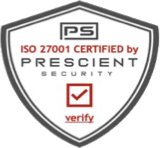A debate rages amongst legal professionals and corporate compliance officers about the best approach to digitize and modernize minute book management. There are certain professionals who abide by the benefits of entity management software (EMS), and there are others who subscribe to the merits of document management software (DMS).
There are many similarities between the two solutions, and there are just as many important differences. To ensure you select the best solution for your own unique purposes, let’s break down how to distinguish between the two types of software.
Modern minute book management is more efficient
Before we dive into the two types of solutions, let’s first summarize the underlying purpose of selecting one of these technologies. That fundamental purpose is to modernize how your legal practice or in-house corporate counsel effectively manages all pertinent minute books and corporate documents.
Modernized minute book management utilizes technological solutions to streamline workflows and efficiently improve recordkeeping processes. Using technology, legal teams can input, update, sort, file, and retrieve minute book records in a matter of seconds. These platforms are intuitive and backed by advanced security features, such as biometric and hardware key authentication. The advanced security parameters protect those records for only those individuals who have been authorized to access the account.
What is entity management software?
Now, let’s break down the two types of technology. We’ll begin with a brief summary of entity management software.
Entity management software is a type of specialized technology that enables legal firms and in-house legal departments to manage multiple legal entities. Advanced entity management solutions are cloud-based softwares that streamline how legal departments manage corporate minute books for dozens or hundreds of entities.
The technology is best suited to assist legal professionals with automating clerical tasks that include each of the following:
-
Corporate compliance deadlines that are managed using a built-in tickler system
-
Automated documentation of company by-laws, corporate resolutions, cap tables, shareholder ledgers, and legal registers
-
Tracking all issuances and transfers of corporate shares from entity to shareholder, as well as amongst various shareholders
-
Creating org. charts that report on all corporate owners, officers, and directors
Entity management software is protected by advanced security features that protect all corporate records from unauthorized access. Solutions like MinuteBox are among the leading secure entity management solutions, having received official ISO 27001 and SOC 2 Type II certifications, each of which validates MinuteBox’s commitment to corporate data security.
What is document management software?
Let’s segue into a summary on document management software and its primary purposes. Document management software is a less advanced version of entity management software, primarily used to help corporations manage the lifecycle of their documents.
Document management software is characterized as a digital filing cabinet that helps companies transition away from paper records. Examples of prominent document management solutions include platforms like Google Drive or DropBox.
While document management software helps companies transition away from paper records and support environmental, social, and governance (ESG) corporate policies, it’s a less capable solution for corporate entity management.
Minute book records that contain corporate finances and shareholders’ personal information require advanced security features to protect the corporation from unauthorized hackings or malfeasance. To ensure corporate information is securely stored in the cloud, legal teams and in-house corporate counsels are better equipped with entity management software.
Benefits of modernized minute book management
Utilizing technology, like entity management software, to manage minute books and update corporate records is far more efficient than traditional processes.
In the past, law clerks and paralegals were required to update all records by hand using paper documents. In addition to the time-consuming nature of this workflow, there was a greater risk that records could be lost, misplaced, stolen, or shredded due to the fickle nature of paper documents.
Legal entities that use technology to modernize minute book management eliminate those security risks, and they make outdated workflows redundant. Since these platforms are intuitive, they save teams valuable working hours. The traditional minute book management process used to take up to 5.5 working hours out of a working legal professional’s day. Using technology, more of that time is earned back, allowing legal talent to reinvest that time towards billable hours for clients that increase Legal Recurring Revenue for the firm.
Are you ready to modernize your own minute book management workflow? Join the MinuteBox revolution and incorporate the most advanced entity management solutions into your established workflows.


